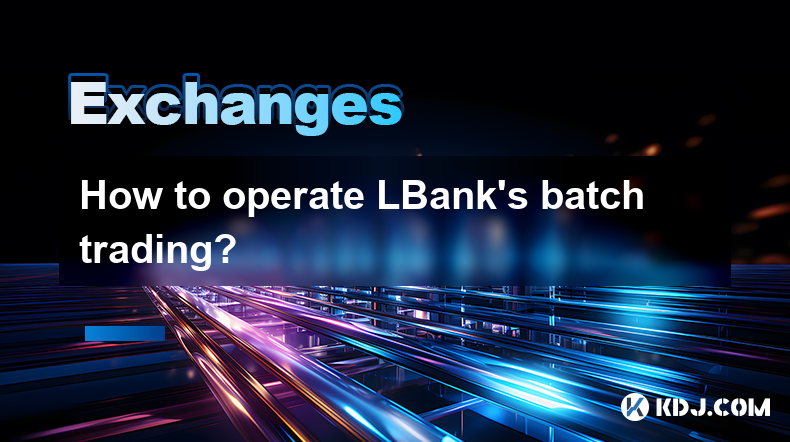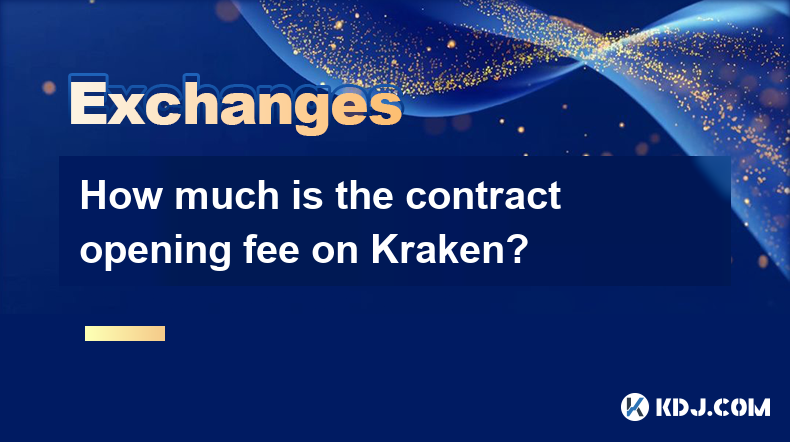-
 Bitcoin
Bitcoin $92,680.4827
-1.06% -
 Ethereum
Ethereum $1,752.0353
-3.50% -
 Tether USDt
Tether USDt $0.9999
-0.04% -
 XRP
XRP $2.1604
-4.74% -
 BNB
BNB $597.8192
-2.41% -
 Solana
Solana $147.9772
-2.60% -
 USDC
USDC $0.9997
-0.03% -
 Dogecoin
Dogecoin $0.1737
-5.16% -
 Cardano
Cardano $0.6892
-2.10% -
 TRON
TRON $0.2446
-0.60% -
 Sui
Sui $2.9979
3.29% -
 Chainlink
Chainlink $14.4341
-3.88% -
 Avalanche
Avalanche $21.9989
-3.49% -
 UNUS SED LEO
UNUS SED LEO $9.2400
1.80% -
 Stellar
Stellar $0.2656
-2.51% -
 Toncoin
Toncoin $3.1060
-0.80% -
 Shiba Inu
Shiba Inu $0.0...01313
-4.02% -
 Hedera
Hedera $0.1788
-3.78% -
 Bitcoin Cash
Bitcoin Cash $345.5624
-3.92% -
 Polkadot
Polkadot $3.9957
-3.28% -
 Litecoin
Litecoin $81.6247
-3.40% -
 Hyperliquid
Hyperliquid $17.8730
-6.22% -
 Dai
Dai $0.9999
0.00% -
 Bitget Token
Bitget Token $4.3985
-4.10% -
 Ethena USDe
Ethena USDe $0.9993
-0.02% -
 Pi
Pi $0.6479
-2.82% -
 Monero
Monero $223.6877
-2.21% -
 Uniswap
Uniswap $5.7553
-4.88% -
 Pepe
Pepe $0.0...08521
-6.96% -
 Aptos
Aptos $5.2919
-1.64%
How to generate the account API signature of Kraken?
To securely use Kraken's API, generate a unique signature for each request using your API secret and a nonce, ensuring authenticity and preventing unauthorized access.
Apr 24, 2025 at 05:35 am

How to Generate the Account API Signature of Kraken?
Kraken is one of the leading cryptocurrency exchanges, known for its robust security measures and extensive trading options. One of the critical aspects of using Kraken's API is generating the account API signature, which is essential for securing your API requests. In this article, we will guide you through the process of generating the account API signature for Kraken, ensuring that you can interact with the exchange's API safely and efficiently.
h3 Understanding the Importance of the API Signature
Before diving into the technical steps, it's crucial to understand why the API signature is important. The API signature is a security mechanism that helps verify the authenticity of the API requests. It ensures that only authorized users can access and manipulate their account data. Without a proper signature, your API requests could be vulnerable to tampering or unauthorized access, which could lead to significant security risks.
h3 Prerequisites for Generating the API Signature
To generate the API signature for Kraken, you will need the following prerequisites:
- An active Kraken account with API access enabled.
- Your API key and API secret, which you can obtain from your Kraken account settings.
- A programming environment where you can write and execute code, such as Python or JavaScript.
- A cryptographic library that supports HMAC-SHA512, such as
hashlibin Python orcrypto-jsin JavaScript.
h3 Step-by-Step Guide to Generating the API Signature
Now, let's walk through the process of generating the API signature for Kraken. We'll use Python as our example programming language, but the process is similar for other languages.
Import the necessary libraries: Start by importing the required libraries. In Python, you will need
hashlibandhmac.import hashlib
import hmac
import timePrepare the API endpoint and payload: Identify the API endpoint you want to use and prepare the payload. For example, if you are making a GET request to the
/0/private/Balanceendpoint, your payload might look like this:endpoint = '/0/private/Balance'
payload = {'nonce': str(int(time.time() * 1000))}
Convert the payload to a URL-encoded string: Use the
urllib.parse.urlencodefunction to convert the payload into a URL-encoded string.import urllib.parse
postdata = urllib.parse.urlencode(payload)Create the message to be signed: The message to be signed is the concatenation of the endpoint and the URL-encoded payload.
message = endpoint + hashlib.sha256(postdata.encode('utf-8')).hexdigest()Generate the signature: Use the HMAC-SHA512 algorithm to generate the signature. The API secret should be used as the key.
signature = hmac.new(your_api_secret.encode('utf-8'), message.encode('utf-8'), hashlib.sha512).hexdigest()
Prepare the API request: Finally, prepare the API request with the necessary headers, including the API key and the generated signature.
headers = {'API-Key': your_api_key, 'API-Sign': signature}
h3 Common Mistakes to Avoid When Generating the API Signature
When generating the API signature for Kraken, there are several common mistakes that you should avoid to ensure the process goes smoothly:
- Incorrect nonce: The nonce must be a unique value for each request. Using the same nonce for multiple requests can lead to errors.
- Incorrect encoding: Ensure that you are using the correct encoding (UTF-8) when converting strings to bytes.
- Incorrect message format: The message to be signed must be formatted correctly, with the endpoint concatenated with the SHA256 hash of the payload.
- Incorrect API secret: Make sure you are using the correct API secret, as any mistake here will result in an invalid signature.
h3 Testing and Verifying the API Signature
After generating the API signature, it's essential to test and verify that it works correctly. You can do this by sending a test request to the Kraken API and checking the response. Here's how you can do it in Python:
Send the API request: Use a library like
requeststo send the API request with the prepared headers and payload.import requests
response = requests.post('https://api.kraken.com' + endpoint, data=postdata, headers=headers)
Check the response: Verify that the response from the API is successful. A successful response will have a status code of 200 and a JSON response with the requested data.
if response.status_code == 200:print('API request successful:', response.json())else:
print('API request failed:', response.status_code, response.text)
h3 Frequently Asked Questions
Q: Can I use the same API signature for multiple requests?
A: No, you should generate a new API signature for each request. The nonce must be unique for each request, which means the signature will also be unique.
Q: What should I do if I receive an error message saying "EAPI:Invalid signature"?
A: This error indicates that the signature you provided is incorrect. Double-check your API secret, the format of the message, and ensure that you are using the correct encoding.
Q: Is it safe to store my API secret in my code?
A: No, it is not safe to store your API secret directly in your code. Instead, use environment variables or a secure configuration management system to store and retrieve your API secret.
Q: Can I use the same API key and secret for multiple applications?
A: While it is technically possible, it is not recommended. Using the same API key and secret for multiple applications increases the risk of security breaches. It's best to use separate API keys and secrets for each application.
Disclaimer:info@kdj.com
The information provided is not trading advice. kdj.com does not assume any responsibility for any investments made based on the information provided in this article. Cryptocurrencies are highly volatile and it is highly recommended that you invest with caution after thorough research!
If you believe that the content used on this website infringes your copyright, please contact us immediately (info@kdj.com) and we will delete it promptly.
- While Bitcoin (BTC) Approaches $94,000, Cardano (ADA) Explodes by 11%
- 2025-04-24 20:10:13
- Dormant Bitcoin (BTC) Movements Increased by 121% in Q1 2025 Compared to Q1 2024
- 2025-04-24 20:10:13
- Dogecoin (DOGE) Price Prediction: Will DOGE Price Break Above the $0.200 Mark?
- 2025-04-24 20:05:14
- DOGE Emerges as a Standout Performer, Posting a 12% Price Increase
- 2025-04-24 20:05:14
- Good Game Group Partners with Dubai-Based TheBlock. to Boost $GDGM Token Adoption
- 2025-04-24 20:01:07
- FARTCOIN Whale Dumps Nearly $5M of the Surging Meme Coin After Massive Gains
- 2025-04-24 20:01:07
Related knowledge

Where to view LBank's API documentation?
Apr 24,2025 at 06:21am
LBank is a popular cryptocurrency exchange that provides various services to its users, including trading, staking, and more. One of the essential resources for developers and advanced users is the API documentation, which allows them to interact with the platform programmatically. In this article, we will explore where to view LBank's API documentation...

Which third-party trading robots does Bitfinex support?
Apr 24,2025 at 03:08am
Bitfinex, one of the leading cryptocurrency exchanges, supports a variety of third-party trading robots to enhance the trading experience of its users. These robots automate trading strategies, allowing traders to execute trades more efficiently and potentially increase their profits. In this article, we will explore the different third-party trading ro...

How to operate LBank's batch trading?
Apr 23,2025 at 01:15pm
LBank is a well-known cryptocurrency exchange that offers a variety of trading features to its users, including the option for batch trading. Batch trading allows users to execute multiple trades simultaneously, which can be particularly useful for those looking to manage a diverse portfolio or engage in arbitrage opportunities. In this article, we will...

How much is the contract opening fee on Kraken?
Apr 23,2025 at 03:00pm
When engaging with cryptocurrency exchanges like Kraken, understanding the fee structure is crucial for managing trading costs effectively. One specific fee that traders often inquire about is the contract opening fee. On Kraken, this fee is associated with futures trading, which allows users to speculate on the future price of cryptocurrencies. Let's d...

How to use cross-chain transactions on Kraken?
Apr 23,2025 at 12:50pm
Cross-chain transactions on Kraken allow users to transfer cryptocurrencies between different blockchain networks seamlessly. This feature is particularly useful for traders and investors looking to diversify their portfolios across various blockchains or to take advantage of specific opportunities on different networks. In this article, we will explore...

How to set up sub-account permissions on Bitfinex?
Apr 24,2025 at 03:08pm
Setting up sub-account permissions on Bitfinex is an essential feature for users who need to manage multiple accounts or delegate certain tasks to others. This guide will walk you through the detailed process of configuring sub-account permissions, ensuring you can manage your cryptocurrency activities effectively and securely. Accessing the Sub-Account...

Where to view LBank's API documentation?
Apr 24,2025 at 06:21am
LBank is a popular cryptocurrency exchange that provides various services to its users, including trading, staking, and more. One of the essential resources for developers and advanced users is the API documentation, which allows them to interact with the platform programmatically. In this article, we will explore where to view LBank's API documentation...

Which third-party trading robots does Bitfinex support?
Apr 24,2025 at 03:08am
Bitfinex, one of the leading cryptocurrency exchanges, supports a variety of third-party trading robots to enhance the trading experience of its users. These robots automate trading strategies, allowing traders to execute trades more efficiently and potentially increase their profits. In this article, we will explore the different third-party trading ro...

How to operate LBank's batch trading?
Apr 23,2025 at 01:15pm
LBank is a well-known cryptocurrency exchange that offers a variety of trading features to its users, including the option for batch trading. Batch trading allows users to execute multiple trades simultaneously, which can be particularly useful for those looking to manage a diverse portfolio or engage in arbitrage opportunities. In this article, we will...

How much is the contract opening fee on Kraken?
Apr 23,2025 at 03:00pm
When engaging with cryptocurrency exchanges like Kraken, understanding the fee structure is crucial for managing trading costs effectively. One specific fee that traders often inquire about is the contract opening fee. On Kraken, this fee is associated with futures trading, which allows users to speculate on the future price of cryptocurrencies. Let's d...

How to use cross-chain transactions on Kraken?
Apr 23,2025 at 12:50pm
Cross-chain transactions on Kraken allow users to transfer cryptocurrencies between different blockchain networks seamlessly. This feature is particularly useful for traders and investors looking to diversify their portfolios across various blockchains or to take advantage of specific opportunities on different networks. In this article, we will explore...

How to set up sub-account permissions on Bitfinex?
Apr 24,2025 at 03:08pm
Setting up sub-account permissions on Bitfinex is an essential feature for users who need to manage multiple accounts or delegate certain tasks to others. This guide will walk you through the detailed process of configuring sub-account permissions, ensuring you can manage your cryptocurrency activities effectively and securely. Accessing the Sub-Account...
See all articles























































































